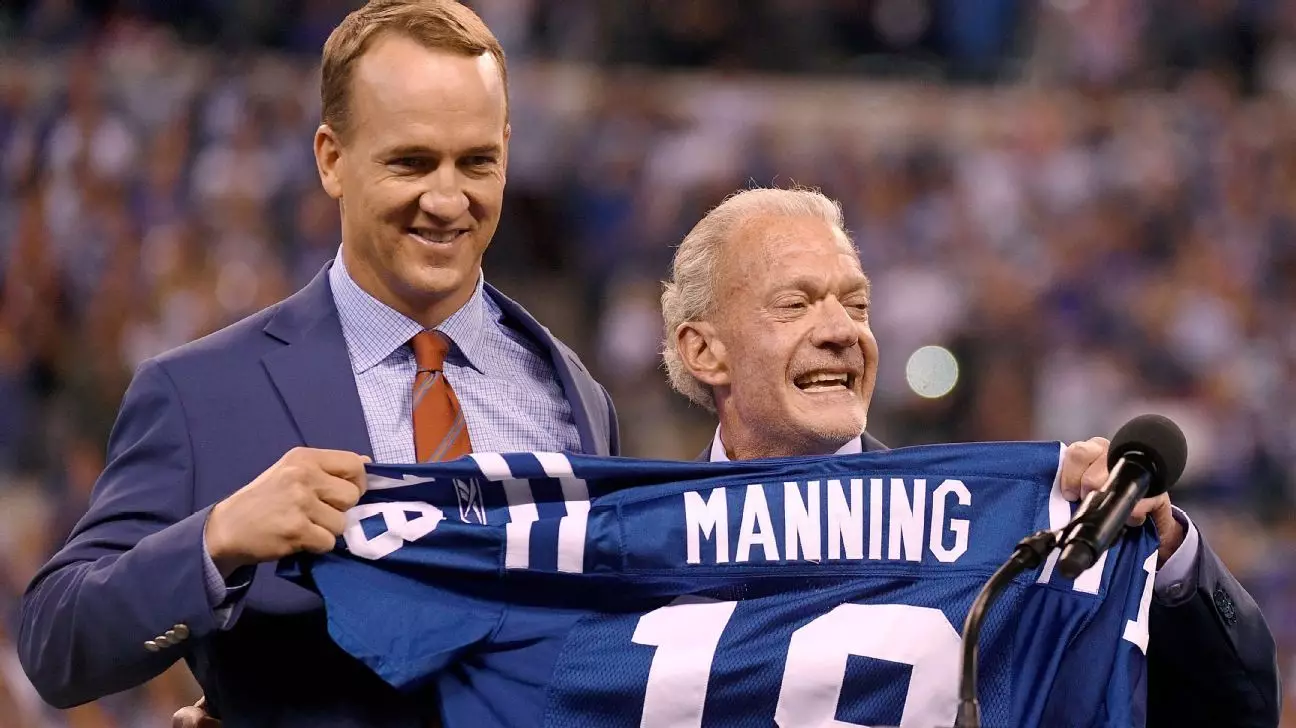In 1998, when Peyton Manning was drafted by the Indianapolis Colts, few could have predicted the seismic shift that would soon take place, not just within the franchise, but also throughout the city of Indianapolis. At that time, Indianapolis was predominantly known for its love of basketball and auto racing — the towering presence of the Indy 500 often overshadowed the grassroots enthusiasm for football. Fast forward over a decade, and the transformation is nothing short of extraordinary. This evolution can be largely attributed to one man: Jim Irsay, the owner of the Colts from 1997 until his untimely passing.
Manning, during an emotional tribute to Irsay on ESPN’s “NFL Live” following the owner’s death, spoke candidly about the shift in cultural attitudes and sporting priorities. Where once basketball and racing ruled the roost, Irsay’s commitment to building a winning team catapulted football into the city’s limelight. He recognized the need to make football a priority and took the necessary steps to make that vision a reality. “When I got there, Indiana basketball, [auto] racing, the Indy 500 — that was it,” Manning recalled, illustrating how the Colts rose from obscurity to become the focal point of Indianapolis’ sporting life.
A Winning Commitment
Jim Irsay’s impact on both the Colts and the Indianapolis community extended beyond mere ownership; it was rooted in his fierce commitment to winning. After hiring the adept Bill Polian, known for his track record of cultivating successful franchises, Irsay helped set the foundation for one of the most formidable teams in football. Manning cited Polian’s influence in drafting talent such as Edgerrin James and retaining stalwarts like Marvin Harrison. These moves were not mere operational decisions; they were calculated bets on elevating the team and, in turn, the city’s identity.
The impact was immediate and profound. The Colts began winning games at an impressive clip, igniting a football frenzy across a city that had long placed its faith elsewhere. Manning’s election to the team turned Indianapolis into an interactive part of the game of football. Schools initiated football programs, fans donned jerseys with pride, and suddenly, Lucas Oil Stadium became a sanctuary for rabid Colts fans. The power of this transformation cannot be overstated; it altered how the city saw itself and its place in the national sports discourse.
Stadiums and Stability
At a time when the Colts faced uncertainties about their future, primarily evinced in discussions around moving franchises to major markets like Los Angeles, Irsay’s vision shone bright. His resolve to keep the Colts in Indianapolis initiated a determining shift that revitalized the franchise’s reputation. “Jim always wanted to stay in Indianapolis… let’s get them a new stadium to play in,” Manning remembered, emphasizing Irsay’s unwavering commitment to both the city and the team.
The construction of Lucas Oil Stadium was not simply an upgrade; it was a statement of intent. The stadium provided the necessary infrastructure to draw crowds, showcase major sporting events, and ultimately enrich the city’s economy. Hosting the Super Bowl in 2012 was both a culmination of Irsay’s vision and a new chapter for Indianapolis, infusing it with national recognition and pride, further establishing the city as a premier destination for sports enthusiasts.
A Complex Relationship
Yet, in the wake of Irsay’s passing, a complicated relationship surfaced between the owner and Manning, especially regarding their abrupt parting in 2012. Though the two shared mutual respect, the decision to release Manning marked a turning point steeped in emotional weight. Manning’s career took him to the Denver Broncos, but his gratitude towards Irsay’s initial support remains intact. A complex bond illustrates the fine line between professional ambition and personal relationships in the cutthroat world of sports.
In his reflections on their shared history, Manning encapsulated the essence of Irsay’s impact, emphasizing a lasting gratitude for the opportunity that propelled his illustrious career. Within this dynamic exists a broader narrative of loyalty, legacy, and dreams realized, resonating with sports fans and aspiring athletes alike. Jim Irsay may no longer be with us, but the legacy he built in Indianapolis will influence generations to come, remaining forever etched within the annals of NFL history.

